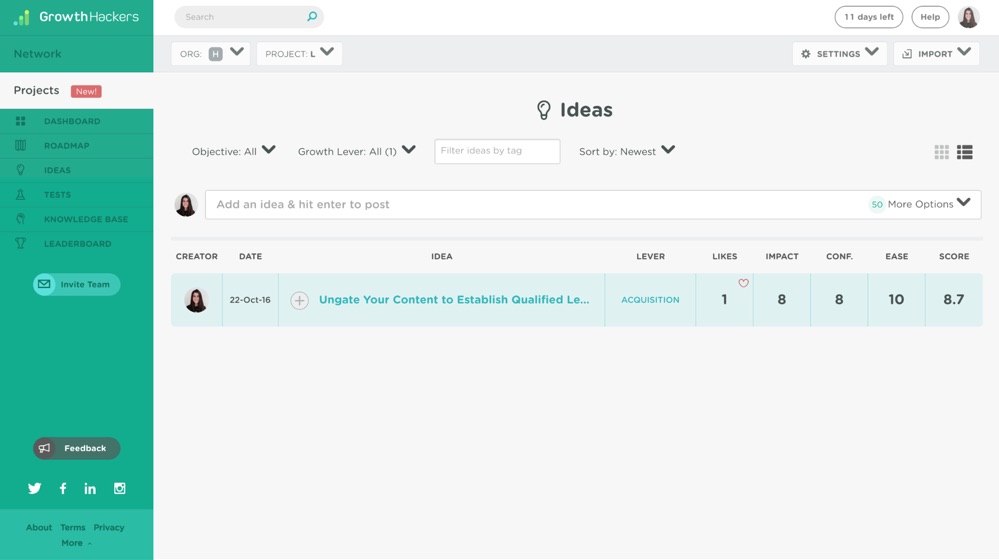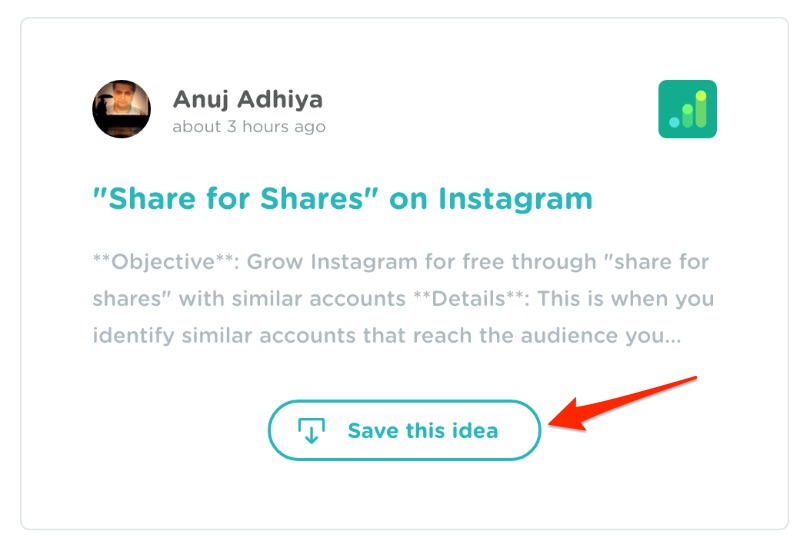Have you heard about the Fake It Hack? How about the Exclusivity Hack? The Aha Moment Hack?
These are a few of the tactics you’ll read if you Google “growth hacking.” Don’t worry if you haven’t heard of them before. You don’t need to know about them yet.
The only thing you need to know right now is how to create a scalable and repeatable process so you can efficiently execute, test and learn from these growth hacks. At least that’s what HubSpot’s former VP of Growth Brian Balfour would say.
According to Balfour’s Slideshare, when it comes to growth hacking, focus on process first, tactics second.
This makes sense because what works for one company will not automagically work for you. Your business model is probably different. Your audience may be different. Your customer journey – you guessed it – is different.
Because Googling for growth hacks is so much more fun than actually carving out yet another process, there’s a million and one mega lists of tactics and virtually no articles on how to create a repeatable system for testing your ideas. In this post, you’ll learn the latter.
First, I’ll discuss why you need a growth process and detail the key documents you’ll need to create. And finally, I’ll outline a step-by-step system for testing your growth hacking ideas.
Shall we?
Why Create a Process?
People + Process = Growth Hacking
Assuming you have good people, you need to give them autonomy to decide what to work on and goals to hold them accountable to.
By establishing a process, you establish a rhythm, allowing your team to efficiently execute experiments and then learn from those experiments. As you run more experiments, you’ll have more learnings to document in your playbook.
Why compile your learnings?
Because what if a key team member leaves, and they weren’t documenting their experiments? Then they leave with key intel, and all those experiments were useless.
The 7-step Process
So you know you want to grow, but you need to be more specific than that.
1. Define Objectives and Key Results (OKRs)
OKRs is a method of defining and tracking objectives and their outcomes. Its main goal is to connect company, team and personal objectives to measurable results, making people move together in the right direction.
Objectives
“It’s like goals served in a fractal manner.” — Eric, founder of Pebble
What do you hope to accomplish?
According to Google, objectives, sometimes referred to as “stretch goals,” should be fairly uncomfortable and quite ambitious. Objectives should be granular enough that you’ll easily know if it has been achieved or not. Here’s a few tips for setting objectives.
- Pick three to five objectives.
- Push for new achievements.
- Make it specific enough to be able to see the end in sight, meaning it should be obvious if a result was achieved or not.
Key results
Key results are the specific numbers, based on objectives, you aim to meet in a specific period of time. Here’s a few tips for picking key results.
- Define three key results for every objective.
- Key results are measurable milestones that will directly inch nearer to reaching the objective.
- Describe outcomes, not activities.
- There must be proof you reached your key result. Evidence should be easily accessible.
OKR example
Here’s an OKR example of Uber.

2. Brainstorm ideas
Next, you need to brainstorm all of the possible avenues to reaching your objectives. If Uber wants to increase its driver base in each region by 20 percent then it needs to brainstorm ways to achieve this key result.
Uber could generate ideas by researching how its competitors are securing more drivers.
Once ideas are generated, its team could try to poke holes in them by asking questions like, why, what if… and what about….
Its team could even look outside its industry and look at how other marketplaces are increasing its supply side because the more dots you have the more ideas you have.
Last but not least, make sure you’re talking with other growth teams to see what’s working for them that might work for you.
To do:
Record a backlog of your ideas.
You don’t want to lose any of your ideas so make sure to record them in a safe place. I prefer to use Trello myself, but a spreadsheet works too.
3. Prioritize
Now, it’s time to decide which ideas you’ll focus on and test. Here’s a few elements to consider during the prioritization process.
- What’s the probability that it will work? Is it a low chance (20 percent), medium (50 percent) or high (80 percent)?
- What’s the potential impact? This comes from your hypothesis, and you should take into account long-lasting effects versus one-hit wonders.
- How much (and what) resources will this require? You must consider teams that will be needed – marketing, design, engineering – and the amount of time that will be required – one hour , half a day, one day, one week.
4. Test
This is where your experiment doc comes in handy.
First and foremost, what’s your hypothesis? Here’s what a hypothesis reads like.
If successful, [variable] will increase by [impact], because [assumptions].
Make sure to justify your assumptions with quantitative (previous experiments, surrounding data, funnel data), qualitative (surveys, support emails, user testing, recordings) and secondary information (networking, blogs, competitor observations, case studies).
To do:
Create an experiment doc.
Google Docs works nicely for this because it allows you to easily collaborate with your team. Your experiment doc should have the following information:
- Objective: Qualitative statement
- Timeframe: Between 30 and 90 days
- KR1: Measurable goal one (hit 90 percent of the time)
- KR2: Measurable goal two (hit 50 percent of the time)
- KR3: Measurable goal three (hit 10 percent of the time)
Here’s a link to an experiment doc in Google Docs I created for you. Feel free to make a copy and use it.
5. Implement
Execute your experiments between 30 and 90 days, and measure weekly results.
6. Analyze
What did you learn? Here’s a few questions to help you analyze your experiment.
- What was the impact of this experiment?
- How accurate were your predictions?
- Why did you see the results you saw?
Once you answer these questions, document your findings at the end of your experiment doc so you can go back and review in the future.
7. Systemize
If your experiment was successful, document your step-by-step process into a “playbook” so you can turn this into a streamlined, repeatable process.
Uber created a playbook for sabotaging Lyft, for example, and it also has a playbook for launching in new cities, since this is something the popular app does all the time.
What Tools Can Help?
I’m so glad you asked. There’s a lot of tools you can use to simplify this process.
GrowthHackers Projects
For $9 per month, you can use Sean Ellis’ GrowthHackers Projects, which is a full-fledged growth hacker system in the form of a web app.

A nice benefit of GrowthHackers projects is it’s connected to GrowthHackers network, which means you can save ideas from the community with the click of a button.

Trello + Google Docs
There’s a lot of Trello growth hacking templates you can copy, such as this one and this one.
Airtable
Airtable is a new, good-looking spreadsheet software. It’s pretty neat. Here’s a growth hacking template for it.
Asana
If you already use Asana, you could just create another project, and use it for your growth hacks. Templana even offers an Asana template with 40 growth hacking tactics to get you started. Also, a few of these free templates by Asana might help you as well.
Growth Hacking is About the Process, Not the Tactics
Woohoo! You’ve carved out a process for growth hacking, which means you’re way ahead of your competitors, since most marketers don’t even have a documented content strategy in place.
Now, you can go wild researching growth hacking tactics. You’re welcome.
About the Author: Lauren Holliday is the founder of Freelanship, which offers 31 pre-packaged marketing gigs, and she’s the creator of the Full Stack Marketer, a full-stack marketing course that helps people learn by doing freelance projects. She’s also the managing editor at Toptal, an an exclusive network of the top freelance software developers and designers in the world.